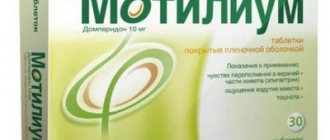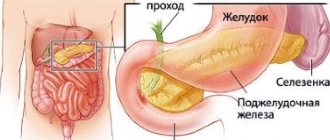Gastritis is the inflammatory process of the epigastrium. There are many reasons for the development of the disease. Unhealthy food, bad habits, excessive emotional experiences and other diseases of the gastrointestinal tract are common. As a rule, during catarrh a pathology of gastric secretion occurs, which is why the level of stomach acidity can increase or decrease.
Symptoms of gastritis include acute pain in the abdominal area, attacks of nausea, belching or heartburn. Signs of inflammation appear on an empty stomach or after eating. It is believed that proper diet is of great importance during illness. The discomfort associated with the disease can be eliminated with the help of medications, but only a healthy diet can normalize the functioning of the stomach.
The work of the human stomach
Diet therapy as a method of treatment
Before treatment with a diet, you should consult a nutritionist to prescribe proper nutrition. There are known diets that are equally suitable for all diseases of the gastrointestinal tract; selected cases are also identified.
If there are no significant changes in the level of gastric juice due to inflammation of the stomach, a universal diet is prescribed. The patient should not eat spicy, salty or fried foods, and drinking alcoholic beverages is prohibited. Meals occur in small portions: at least 5 times a day in small portions. If the level of gastric juice has changed, the patient is not recommended to eat foods that can affect acidity. Based on these rules, suitable and non-recommended foods are selected.
The concept of gastritis, diet therapy
Gastritis is inflammation of the gastric mucosa. More often, the disease is provoked by stress, eating disorders, alcohol-containing drinks, and fasting.
Complex therapy for gastritis includes diet therapy. The patient is prescribed a strict diet (table 5). With this type of nutrition, the patient should not eat spicy, fried, or fatty foods. Food is steamed, boiled, stewed, baked.
Fish and meat are recommended to be non-fatty varieties. The following vegetables are consumed:
- potato;
- zucchini;
- cauliflower;
- broccoli.
Soups are cooked without frying. It is recommended to follow the diet not only during exacerbation, but also during remission.
Is condensed milk allowed during gastrointestinal illness?
Many sweet tooth lovers are concerned about whether it is permissible to eat condensed milk if they have gastritis, because treatment requires a special diet. It is a rare patient who is able to endure therapy without his favorite sweet.
Nutritionists say that consuming condensed milk for inflammation of the stomach is allowed. As you know, it is saturated with milk proteins and calcium, which has a beneficial effect on the gastrointestinal tract. Milk is beneficial for gastritis and retains its benefits even in condensed form.
You should not overuse the product; it is rich in calories and too fatty, which can cause disorders of the digestive tract. Moderate intake is allowed. Nutritionists recommend taking up to three teaspoons of the product for breakfast or lunch.
You should be extremely careful with products that only resemble condensed milk and have little in common with the natural product. As a rule, manufacturers use a variety of food additives to make surrogates. Milk replaces starch, palm or vegetable oil and milk powder. Such a product can be harmful to health; before purchasing, you should carefully read the composition.
Condensed milk and its properties
The beloved and well-known product called “condensed milk” has been around for a century and a half. This method of preserving milk was invented in the USA by Gale Borden. The impetus for this was the death of children who were poisoned by low-quality milk from sick cows.
In Russia, the production of condensed milk began in 1881. In Russia, the new dairy product quickly gained fame and won love.
Condensed milk is a highly processed product. For this reason, there is no need to talk about the presence of vitamins in it. However, it contains all the microelements that fresh milk does. Particularly rich in calcium.
The classic method of preparing condensed milk is accessible to everyone. Whole milk is evaporated for a long time over low heat. You don't have to add sugar. Well-boiled milk can be stored for a long time without losing its properties. Sugar is added for taste and to better guarantee the safety of the product.
Condensed milk without and with sugar is available for sale. However, the sweet product is more popular and is produced in larger quantities.
In the production of condensed milk on an industrial scale, membrane technologies are now used to make the product faster and of better quality. To prevent sugar crystallization, lactose is added to condensed milk, which does not spoil the product at all.
So far we have been talking about the classic version of condensed milk. However, with the development of technology, “condensed milk” products appeared. They are replete with various additives that have nothing to do with the natural product. Instead of whole milk, starch, butter or vegetable oil (most often palm or rapeseed), and powdered milk are used.
Any condensed milk contains about 8% fat (mainly milk), 5% protein, 55% carbohydrates. Most carbohydrates are sugars. Naturally, such a product has a high calorie content, for which it is appreciated by those who have to spend a lot of energy.
What kind of condensed milk can
The choice of condensed milk is important. Not every one is suitable for a recovering body. First of all, the patient is recommended to choose a brand that has proven itself to be of high quality products. Make sure that the product meets the parameters specified in GOST.
Artificial additives are unacceptable. Condensed milk with strawberry or banana flavor is definitely not suitable; various components are added to the composition to enhance the taste. Nutritionists prohibit the use of boiled condensed milk for gastritis. It is considered too fatty, saturated with sugar and other components that are harmful to health during the treatment period.
Benefits for the body
Condensed milk tastes good and has a number of useful properties:
- The main component of condensed milk is milk; the product retains its enveloping ability, due to which a protection is formed around the affected areas that does not allow gastric juice to have a destructive effect on the epigastrium;
- This is an extremely nutritious product. Often during diseases of the gastrointestinal tract a person experiences constant hunger. If the functioning of the digestive organs is disrupted, the body lacks proteins, the patient will begin to need energy-rich food;
- Sweet foods have a beneficial effect on the liver. As you know, catarrh is often associated with liver diseases; during treatment it is worth taking care of this important organ;
- One of the properties of condensed milk is the ability to eliminate the aggressive environment of the epigastrium. It will be useful to consume honey, which reduces the risk of ulcers. Nutritionists advise combining honey with condensed milk; in its pure form, the bee product can cause heartburn and stomach upset;
- Psychologists note that consuming condensed milk reduces the possibility of developing stress and emotional tension. Being limited in many foods due to gastritis, a person experiences psychological difficulties. Mental activity becomes difficult. Condensed milk promotes a good mood, supplies energy that increases brain activity;
- The product is good for the digestive organs and does not require much time to digest.
Contraindications
As noted earlier, the greatest dangers await the buyer not during use, but during purchase. Today it is difficult to find quality products on store shelves. Sometimes the word “GOST” on the packaging does not provide a 100% guarantee that the product contains only the necessary components. In some cases, the composition of condensed milk will harm both a patient with inflammation of the stomach and a completely healthy person.
Perhaps the most harmful product for health is oil, butter or vegetable. Harmful due to fat content. The color will be an indicator of refusal to purchase condensed milk. Products that are beige or brown in color are contraindicated, indicating the fat content in the composition. Only white condensed milk is allowed to be eaten.
Boiled condensed milk is considered harmful due to additives. Fillers change the taste of the product, increase acidity, negatively affecting the functioning of internal organs.
A high-quality product will be useful during the treatment of an inflamed stomach, but you need to consume it a little. Abuse of sugar will harm a sick person and a healthy one.
Principles of diet for gastritis
There are universal diets (for the treatment of all diseases of the digestive system), and there are special ones that are prescribed for specific diseases, for example, hepatitis, pancreatitis.
If gastritis has not yet led to a significant change in the pH of gastric juice, then you can get by with a general diet, the essence of which consists of the following rules:
- do not eat spicy, salty, fried, fatty foods;
- stop drinking alcohol;
- eat often and in small portions;
- try to eat only fresh and natural products.
When the pH of the gastric juice changes, these rules are supplemented by a ban on food with a pronounced deviation from neutral acidity.
Based on these principles, you should make a decision about the use of a particular product.
Other sweets for inflammation
Patients are interested in permission for other sweets. Not all foods are good for a person during inflammation.
Chocolate
Nutritionists do not advise eating chocolate if the gastric mucosa is inflamed. The product is saturated with fats, it is difficult to digest, which will cause digestive upset and pain in the epigastric region. The harmfulness of chocolate to the body lies in the presence of flavor components, nuts and raisins, which are prohibited in case of stomach pathology.
Exceptions are allowed. Nutritionists say that dark chocolate is completely safe for health, but you should not abuse it. It is recommended to take up to 40 grams per day. Other types of chocolate will harm the body. It is not advisable to eat chocolates if you have gastritis.
Ice cream
According to nutritionists, ice cream has a beneficial effect on the treatment of catarrh if the acidity level is elevated. Ice cream causes a decrease in acidity and neutralizes discomfort in the stomach. You should remain careful when purchasing. It is necessary to study the composition of the product; the content of flavorings and sweeteners is undesirable.
If a patient has been diagnosed with gastritis with low acidity, ice cream is contraindicated.
Dried fruits
It is prohibited to eat dried apricots, raisins, prunes and figs if you have an upset stomach. The reason is that the listed products have too thick skins that remain in the stomach for a long time, making it difficult to treat the disease.
Other dried fruits are allowed to be consumed. Doctors note that compotes made from dried fruits are more beneficial for humans.
Gastritis and its manifestations
Gastritis is an inflammatory disease of the gastric mucosa. The genesis of this disease is varied. The reasons may be poor nutrition, poisoning, abuse of medications, alcohol, previous infections, stress, diseases of other digestive organs (liver, pancreas, intestines).
This disease may be accompanied by disturbances in the production of digestive juice, as a result of which acidity may increase or decrease.
The consequences of gastritis can manifest themselves in the development of stomach ulcers, the occurrence of inflammatory processes in the intestines, and the appearance of disorders in the liver and pancreas.
Signs of gastritis are pain in the upper abdomen, nausea, sometimes vomiting, belching, and heartburn. All these symptoms can occur on an empty stomach. This is due to the irritating effect of digestive juice on the walls of the stomach. Pain and other unpleasant sensations that occur after eating are usually associated with eating food that has an irritating effect on the mucous membrane.
The main treatment for a patient with gastritis is diet. The acute condition can be treated with medications, but a complete recovery from this disease can only be achieved with the help of a strict diet.
Treatment of lactase deficiency
Only those cases of lactose intolerance that are clinically manifest require treatment. The main principle of treatment is a differential approach to therapy depending on:
- on the age of the patient (full-term or premature newborn, infant, young, older, adult patient);
- degree of enzymatic deficiency (alactosia, hypolactosia);
- genesis of fermentopathy (primary or secondary).
The main treatment for patients with absolute lactase deficiency (alactasia) is a complete abstinence from consuming milk and dairy products. In parallel, therapy is carried out aimed at correcting intestinal dysbiosis, replacement therapy (use of lactase drugs: lactrase, thylactase, lactaid) and symptomatic treatment.
In secondary lactase deficiency, the focus is on treating the underlying disease. Reducing the amount of lactose in the diet is temporary until the small intestinal mucosa is restored.
In patients with primary or secondary lactase deficiency, the degree of restriction in the consumption of milk and dairy products is strictly individual, since some patients cannot tolerate only milk, but are able to eat fermented milk products with a low lactose content. And patients with a slight degree of hypolactasia can consume even small amounts of fresh milk (up to 100–150 ml per day) without harm to health. In such cases, it is allowed to take milk not on an empty stomach, slowly, in small portions no more than 1-2 times a week. Restrictions are lifted when the patient's tolerance to dairy products increases.
Keep a food diary!
The patient needs to keep a food diary. Thanks to the recordings, you can get answers to two important questions:
- What particular product caused flatulence and diarrhea?
- How much lactase should be added to foods containing lactose?
In order to identify the patient's reaction to milk, it is recommended to carry out test loads of milk or lactose. Training of the corresponding enzyme systems is also indicated by administering small amounts of fermented milk products when the sick child or adult patient is in satisfactory condition. An indicator of an increase in the threshold of tolerance to milk is the absence of intestinal disorders.
Carefully!
In the food industry, lactose is used in the production of many food products. In addition to milk and dairy products, lactose is present in packaged sausages, packaged soups, ready-made sauces, chocolate, and cocoa powder. It is used to increase the viscous properties of the product and ease of use. Lactose is 30–35% less sweet than sucrose; it is added in large quantities. When baked, milk sugar turns brown, so it is an invariable ingredient in French fries, croquettes, confectionery and baked goods.
Lactose is also widely used in the manufacture of pharmaceuticals and is one of the main components of flavors, flavor enhancers, sweeteners, etc.
Read food and drug labels.
Nutrition for lactase deficiency
Want more new information on nutrition issues? Subscribe to the informational and practical magazine “Practical Dietetics”!
SUBSCRIBE
With primary (constitutional) lactase deficiency, the amount of lactose in the diet is reduced, up to its complete exclusion for life. You can reduce the amount of lactose in your diet by reducing or completely eliminating the consumption of lactose-containing products, primarily whole milk (see Table 1). This method is suitable for adults and older children with adult-type lactase deficiency.
It is important to note that neither in adults nor in children is there a correlation between the level of lactase activity and the severity of clinical symptoms. With the same degree of enzyme deficiency, there is great variability in symptoms (including diarrhea, flatulence and abdominal pain). However, in each individual patient, clinical manifestations depend on the amount of lactose in the diet (dose-dependent effect).
In case of secondary lactase deficiency, the use of fermented milk products, butter, and hard cheeses is allowed. Pasteurized fermented milk yoghurts are absorbed worse by patients, since the microbiological effect of lactase is destroyed during heat treatment. You should buy products with live lactic acid bacteria because the bacteria in yogurt have already digested some of the lactose. It is advisable to eat yogurt, or acidophilus, or yogurt every day.
Cheeses are divided according to the degree of ripening: the longer the cheese ripens, the less milk sugar remains in it. Consequently, hard and semi-hard cheeses (Swiss, cheddar) lose most of the lactose.
Fats and half-fat cream contain less lactose than milk, so their consumption in small quantities is allowed in exceptional cases. The higher the fat content of a product, the less lactose it contains. A glass of milk contains 12 g of lactose. If necessary, milk and milk cheese can be replaced with soy milk and soy cheese.
It is advisable to combine dairy products, for example, with grain foods, breads, and pies, writes Edward Claflin in his book “The Home Doctor for Children” (1997).
A dairy-free diet may reduce calcium intake.











